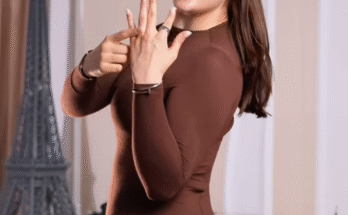
Growing up, I always felt like I didn’t quite fit in. In a world where everyone seemed to have their place—whether it was in a social group, a family dynamic, or a set of interests—there I was, constantly trying to find a spot for myself. I was like a zebra in a field of horses, desperately hoping to blend in. I wasn’t trying to stand out or be special; I just wanted to disappear into the crowd. I wanted to be one of them, part of something bigger than myself, something that didn’t highlight my differences but embraced them. But the harder I tried to blend in, the more I felt like an outsider.
The desire to blend in is an experience that many can relate to, especially during adolescence when identity is still in flux, and the need for social acceptance is at its peak. For me, this struggle didn’t come from a place of self-loathing but from a deep-seated yearning for connection. The world seemed to work in such defined ways—there were social norms, rules, and expectations that people adhered to, and I thought that if I could just master the art of fitting in, life would become easier. So, I did what many others do in an effort to disappear into the background: I adopted personas, adjusted my voice, shifted my opinions, and attempted to change my style to match the collective. But what I didn’t realize at the time was that in trying to blend in, I was only losing myself.
The Struggle to Blend In
As a child, I was already acutely aware of my differences. I was always the “new kid,” and my family moved frequently, which meant I was constantly thrust into unfamiliar environments. Every time we relocated, I found myself trying to figure out how I could navigate a new place without drawing too much attention to myself. I wasn’t outgoing, nor was I particularly shy—I was somewhere in between. But it didn’t matter because, no matter how hard I tried to adopt the same habits, attitudes, and clothes as the others, I couldn’t fully erase the feeling that I wasn’t like everyone else.
School was where I felt this most intensely. The cafeteria was a battleground, where you had to find your seat and establish your place in the pecking order. I never quite knew where I belonged, so I made the mistake of trying to fit into every group. I tried to be the sporty kid who could throw a football and join in on the recess games. I tried to be the academically gifted one who always had the right answer to impress the teachers. And, at times, I even tried to mimic the popular kids, wearing the latest trends and adopting the same language and slang. But none of these efforts made me feel more at home. Instead, they left me feeling fragmented, like I was wearing a mask that never quite fit.

The Impact of Trying to Fit In
The more I tried to blend in, the more I lost touch with the parts of me that made me unique. I began to silence my true thoughts and opinions because they didn’t align with the prevailing ideas of the groups I was trying to be a part of. I held back from pursuing my interests because they seemed out of place or “uncool.” I watched others confidently express themselves while I cowered in the shadows, uncertain of who I was without the crutch of conformity.
Trying to blend in also put a strain on my mental health. I was constantly comparing myself to others and never feeling like I measured up. There was always someone who seemed more talented, more attractive, or more confident. I felt like I was invisible in the most painful way possible—nobody noticed me because I wasn’t being myself. I had become a chameleon, shifting my identity to suit whatever environment I found myself in. But all the blending in only led to more isolation because I didn’t allow myself to connect with others on a deeper level.

The Realization: Embracing My Uniqueness
It took a long time for me to realize that blending in wasn’t the answer. It wasn’t until I reached a point of exhaustion from pretending to be someone I wasn’t that I realized I didn’t need to fit in at all. I started to understand that my differences were not things to hide but rather aspects of myself to celebrate. I didn’t need to be like everyone else in order to be accepted. Instead, I needed to embrace the parts of me that made me stand out, the quirks and interests that I had once viewed as flaws.
I remember the first time I allowed myself to wear something I truly liked, even if it didn’t match the trends. I walked into a room, nervous at first, but then something surprising happened: nobody stared, nobody judged, and I felt freer than I had in years. For the first time, I wasn’t focused on what others thought about me; I was simply being myself. Slowly, I began to cultivate friendships with people who appreciated me for who I truly was, not the persona I had created.
The Zebra Moment
I often think back to the analogy of the zebra in a field of horses. I used to think that in order to survive, I needed to blend in with the crowd of horses. But the more I tried to do so, the more I felt like I was ignoring my true nature. A zebra doesn’t need to pretend to be a horse—it stands out because of its unique stripes, and it thrives in its own way. I began to understand that the very things I thought made me different were the things that made me interesting. I didn’t need to hide or suppress these parts of myself to gain acceptance. I needed to own them.
Just like the zebra in a field of horses, I realized that being different didn’t make me less worthy of love, friendship, or success. It made me special. I didn’t need to blend in. I needed to stand out in my own way and find people who valued my authenticity, quirks, and all.

Conclusion: Standing Out by Being Yourself
Blending in may feel like the easy option, but it often comes at the cost of losing yourself. I spent a lot of years trying to be something I wasn’t, but it was only when I stopped trying to conform to others’ expectations that I truly found my place. Life isn’t about blending into the background—it’s about celebrating who you are and finding the people who will love and accept you for it.
Today, I embrace my uniqueness, the things that once made me feel like an outsider. And as I continue on this journey, I understand that being different is not a weakness; it’s my strength. So, instead of blending in, I’ve learned to stand out—proudly, confidently, and authentically. Because in the end, the only person I need to fit in with is myself.



